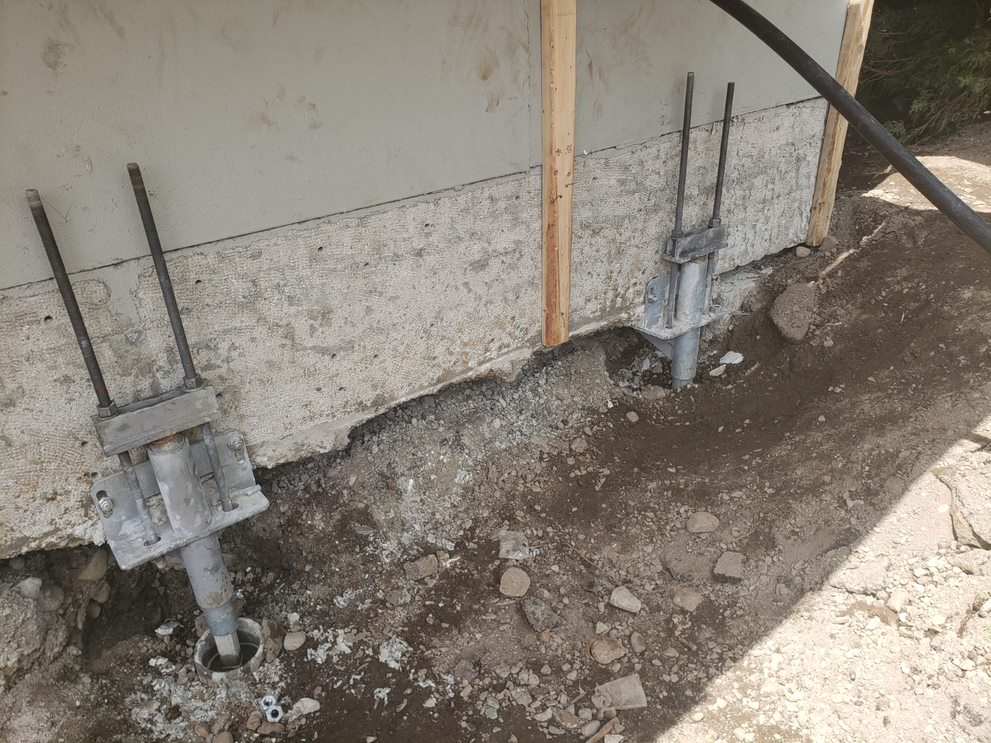What is Underpinning?
Underpinning or bolstering the current foundation is necessary to support your construction. It becomes required when the original foundation weakens and can no longer sustain the house. Usually, it happens due to changes in the soil’s structure.
Underpinning may become necessary to ensure your home’s structure stays sturdy, regardless of soil type or external factors.
How Can You Tell If Underpinning Is Required?
Here are a few factors structural engineers take into account while evaluating the home’s foundation to determine whether underpinning is required:
- They will perform a preliminary examination to determine whether or not the damage is significant.
- Monitor your home’s foundation to determine the cause of any damage.
- Check if soil movement can be fixed quickly and easily.
- Investigate and take measurements of your home to determine the kind and state of the underlying soils and the size and depth of the current foundations.
- Structural engineers must adhere to specific standards if the Needle Beam Underpinning project is close to or adjacent to an existing building.
Reasons For Underpinning?
There are numerous justifications for why underpinning is necessary. To better comprehend the special utility of underpinning, consider the following list.
If a building needs to be underpinned:
- The original foundation cannot support the structure since it is unstable or strong enough.
- The structure’s original purpose has changed, necessitating foundational reinforcement. The soil is unable to support the structure’s weight.
- The building is getting another story. Thus, deeper footings are needed to accommodate more load-bearing capacity.
- Repairing or reinforcing is more affordable than purchasing new.
- Earthquakes, droughts, floods, and other natural disasters have jeopardised the structural security of buildings.
Types of Underpinning
The oldest and most popular foundation restoration technique in the world is mass concrete underpinning, also known as mass pour.
This entails excavating cavities or holes beneath a weakening foundation and placing fresh mud, concrete, or filler therein.
As a result, the foundation’s depth and width increase, adding to its inherent support.
This is easy, basic, and completes the task. You can explain it by excavating a hole beneath the current foundation and filling it with structurally sound material.
Beam and Base Underpinning
A reinforced concrete or steel beam is built below, above, or in place of the old footing in this more recent type of underpinning.
The concrete or metal bases, which have been placed in carefully considered load-bearing places, are subsequently transferred to the weight of the building by the beam.

Mini-piled Underpinning
Mini Piled Underpinning allows the most excellent flexibility in confined and restricted areas. This foundation gives the most flexibility regarding where access is restricted or limited and environmental contamination is a significant problem.
Mini-piled underpinning is often used when it is necessary to shift the structure’s load to deeper, more capable soil – occasionally as deep as 50 feet.
Moreover, this method was invented in 1952 in Italy and has since undergone multiple modifications under various names and patents.
But Why do Building Fails
There are many reasons the foundations of a building might fail.
Reactive Soils
The issue is most usually with the migration of highly reactive soils. This motion entails contraction, which promotes settlement or expansion, which causes heaving. Long-term dryness causes soils to lose moisture and contract gradually. Soils swell, often by several hundred per cent, when moisture levels are high, as they are during prolonged wet weather.
Site Erosion
The soil surrounding foundations can erode to the point where the structural integrity of the foundations is endangered. Erosion may result from several factors, including poor drainage, a burst water pipe, or other uncontrolled water flow.
Slope Error
Failure of a slope is related to the earth moving downward. It may entail either gradual failure, also known as “creep”, or abrupt failure, also known as “landslides”. Underpinning can fix slopes that are failing due to land sliding. However, a professional evaluation is needed because of how site-specific this is.
Poor Compacted Fill
When filling a site, the material is not always tightly compact enough to support the weight of the structure above it. These situations regularly create foundation issues. Poorly compacted fill, the use of different fill materials, or a combination of the two may be the cause of the issue.








